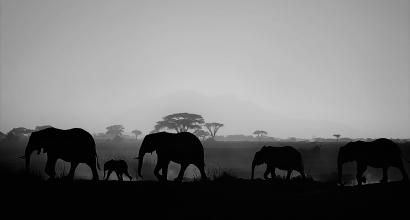Kosambi hurls an accusation at Krishna for being the creator of the system of varnas –
“Not only that, the god himself had created such differences (G.4.13): “The four-caste (class) division has been created by Me”; this is proclaimed in the list of great achievements. The doctrines are certainly not timeless.” (Emphasis is mine)
(M&R, p.19)
While doing so, it is strange that Kosambi fails to quote the other half of the verse. The original verse, BG 4.13, says –
चातुर्वर्ण्यं मया सृष्टं
गुणकर्मविभागशः |
तस्य कर्तारम् अपि मां
विद्ध्यकर्तारम् अव्ययम् ||
which when translated yields:
“I have brought forth the four basic traits,
a classification based on guna and karma.
Although I am their cause,
I am unchanged and beyond all action.”
[contextly_sidebar id="6IIeM5oDnJTtuZKCn79NFx0q4KBn9UgL"]This social classification is based on guna (inherent nature of a person) and on karma (occupation, work). It has nothing to do with birth, family, gender, race, or social status. If human nature has remained more or less same over centuries and if the work that humans do has been important for centuries, why is this doctrine not timeless?
Further, in BG 18.42-45, Krishna explains the ‘characteristics’ of the people from the four varnas. Division of a society based on occupation can be seen through the ages and across cultures.
Kosambi then goes on to demonstrate that he is obsessed with a narrow interpretation of the Gita. He says –
“That the song divine is sung for the upper classes by the brahmins, and only through them for others, is clear. We hear from the mouth of Krsna himself (G.9.32): "For those who take refuge in Me, be they even of the sinful brands such as women, vaisyas, and sudras." That is, all women and all men of the working and producing classes are defiled by their very birth, though they may in after-life be freed by their faith in the god who degrades them so casually in this one.” (Emphasis is mine)
(M&R, p.19)
Again, Kosambi quotes only a part of the verse. The original verse, BG 9.32, says –
मां हि पार्थ व्यपाश्रित्य
येऽपि स्युः पापयोनयः |
स्त्रियो वैश्यास्तथा शूद्राः
तेऽपि यान्ति परां गतिम् ||
which when translated gives:
“Whoever takes refuge in me –
even men of sinful birth,
women, traders, or laborers –
will attain the supreme goal.”
The word ‘पापयोनयः’ means ‘those of sinful births’ or ‘those who give rise to sin.’ In this verse, this word can be interpreted in two ways. One is to consider पापयोनयः as an adjective for the other three categories. The other is to consider it as a separate category. Either way, it doesn’t change the import of the verse. A significant word in this verse is ‘स्युः’ which means ‘may be’ or ‘should it be so.’ Krishna says, “Even though some people might be considered as sinful...” which means he is not advocating this theory that women, vaishyas, and shudras are of sinful birth. He is just referring to how society tends to look down upon certain sections of people.
Krishna has, however, made his stance clear just a few verses earlier. In BG 9.29, he says, “I am equally present in all beings; none is hateful or dear to me.” Clearly, he doesn’t make a distinction between men and women, working class and intellectuals. In BG 9.30-31, he says, “Even if a man steeped in evil worships the Supreme, he must be considered as noble since he has taken the right decision. Readily, he attains everlasting peace...”
So the import of verse 9.32 is simply this: Irrespective of social status or gender or race or scholarship, those who take refuge in the supreme will attain the highest level. In BG 4.36, he says something similar, but with reference to the material world – “Even if you were the gravest of sinners, you will cross the ocean of sin with the raft of knowledge.” It is this very assurance of Krishna that ensures a scenario exactly opposite of what Kosambi accuses the Gita of.














































Comments